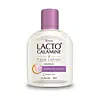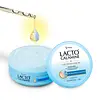What's inside
What's inside
 Key Ingredients
Key Ingredients

 Benefits
Benefits

 Concerns
Concerns

 Ingredients Side-by-side
Ingredients Side-by-side

Water
Skin ConditioningKaolin
AbrasiveRicinus Communis Seed Oil
MaskingGlycerin
HumectantZinc Oxide
Cosmetic ColorantZinc Carbonate
PEG-100 Stearate
Glyceryl Stearate
EmollientPolysorbate 80
EmulsifyingHamamelis Virginiana Extract
AntiseborrhoeicCetearyl Alcohol
EmollientXanthan Gum
EmulsifyingPhenoxyethanol
PreservativeChlorphenesin
AntimicrobialParfum
MaskingCI 77491
Cosmetic ColorantCI 15850
Cosmetic ColorantCitronellol
PerfumingCoumarin
PerfumingLinalool
PerfumingBenzyl Alcohol
PerfumingHydroxycitronellal
PerfumingCinnamyl Alcohol
PerfumingAmyl Cinnamal
PerfumingIsoeugenol
PerfumingGeraniol
PerfumingBenzyl Salicylate
PerfumingBenzyl Cinnamate
PerfumingBenzyl Benzoate
AntimicrobialEugenol
PerfumingLimonene
PerfumingWater, Kaolin, Ricinus Communis Seed Oil, Glycerin, Zinc Oxide, Zinc Carbonate, PEG-100 Stearate, Glyceryl Stearate, Polysorbate 80, Hamamelis Virginiana Extract, Cetearyl Alcohol, Xanthan Gum, Phenoxyethanol, Chlorphenesin, Parfum, CI 77491, CI 15850, Citronellol, Coumarin, Linalool, Benzyl Alcohol, Hydroxycitronellal, Cinnamyl Alcohol, Amyl Cinnamal, Isoeugenol, Geraniol, Benzyl Salicylate, Benzyl Cinnamate, Benzyl Benzoate, Eugenol, Limonene
Water
Skin ConditioningGlycerin
HumectantDimethicone
EmollientNiacinamide
SmoothingIsopropyl Myristate
EmollientTocopheryl Acetate
AntioxidantSodium Hyaluronate
HumectantAllantoin
Skin ConditioningPanthenol
Skin ConditioningXylitylglucoside
HumectantAnhydroxylitol
HumectantXylitol
HumectantPolyacrylate-13
Polyisobutene
Polysorbate 20
EmulsifyingPEG-100 Stearate
Glyceryl Stearate
EmollientCarbomer
Emulsion Stabilising1,2-Hexanediol
Skin ConditioningPhenoxyethanol
PreservativeEthylhexylglycerin
Skin ConditioningImidazolidinyl Urea
PreservativeDisodium EDTA
Aminomethyl Propanol
BufferingParfum
MaskingCI 42090
Cosmetic ColorantLinalool
PerfumingButylphenyl Methylpropional
PerfumingCoumarin
PerfumingWater, Glycerin, Dimethicone, Niacinamide, Isopropyl Myristate, Tocopheryl Acetate, Sodium Hyaluronate, Allantoin, Panthenol, Xylitylglucoside, Anhydroxylitol, Xylitol, Polyacrylate-13, Polyisobutene, Polysorbate 20, PEG-100 Stearate, Glyceryl Stearate, Carbomer, 1,2-Hexanediol, Phenoxyethanol, Ethylhexylglycerin, Imidazolidinyl Urea, Disodium EDTA, Aminomethyl Propanol, Parfum, CI 42090, Linalool, Butylphenyl Methylpropional, Coumarin
Ingredients Explained
These ingredients are found in both products.
Ingredients higher up in an ingredient list are typically present in a larger amount.
Coumarins are a group of substances found naturally in plants. There are over 1300 types of coumarins identified. It has a natural vanilla scent.
Coumarin is an identified EU known allergy, meaning it may cause an allergic reaction when applied to the skin.
In many countries, coumarin is banned as a food additive. However, it can be found in soaps, tobacco products, and some alcohol drinks.
Plants use coumarins as a chemical defense. Some plants that have coumarins include lavender, tonka beans, and yellow clovers.
Learn more about CoumarinGlycerin is already naturally found in your skin. It helps moisturize and protect your skin.
A study from 2016 found glycerin to be more effective as a humectant than AHAs and hyaluronic acid.
As a humectant, it helps the skin stay hydrated by pulling moisture to your skin. The low molecular weight of glycerin allows it to pull moisture into the deeper layers of your skin.
Hydrated skin improves your skin barrier; Your skin barrier helps protect against irritants and bacteria.
Glycerin has also been found to have antimicrobial and antiviral properties. Due to these properties, glycerin is often used in wound and burn treatments.
In cosmetics, glycerin is usually derived from plants such as soybean or palm. However, it can also be sourced from animals, such as tallow or animal fat.
This ingredient is organic, colorless, odorless, and non-toxic.
Glycerin is the name for this ingredient in American English. British English uses Glycerol/Glycerine.
Learn more about GlycerinGlyceryl Stearate is a mix of glycerin and stearic acid.
It is used to stabilize the mixing of water and oil ingredients. By preventing these ingredients from separating, it can help elongate shelf life. It can also help thicken the product's texture.
As an emollient, it helps soften skin and supports barrier-replenishing ingredients.
In cosmetics, Glyceryl Stearate is often made from vegetable oils or synthetically produced.
This ingredient may not be fungal-acne safe
Fun fact: The human body also creates Glyceryl Stearate naturally.
Learn more about Glyceryl StearateLinalool is a fragrance and helps add scent to products. It's derived from common plants such as cinnamon, mint, citrus, and lavender.
Like Limonene, this ingredient oxidizes when exposed to air. Oxidized linalool can cause allergies and skin sensitivity.
This ingredient has a scent that is floral, spicy tropical, and citrus-like.
Learn more about LinaloolParfum is a catch-all term for an ingredient or more that is used to give a scent to products.
Also called "fragrance", this ingredient can be a blend of hundreds of chemicals or plant oils. This means every product with "fragrance" or "parfum" in the ingredients list is a different mixture.
For instance, Habanolide is a proprietary trade name for a specific aroma chemical. When used as a fragrance ingredient in cosmetics, most aroma chemicals fall under the broad labeling category of “FRAGRANCE” or “PARFUM” according to EU and US regulations.
The term 'parfum' or 'fragrance' is not regulated in many countries. In many cases, it is up to the brand to define this term.
For instance, many brands choose to label themselves as "fragrance-free" because they are not using synthetic fragrances. However, their products may still contain ingredients such as essential oils that are considered a fragrance by INCI standards.
One example is Calendula flower extract. Calendula is an essential oil that still imparts a scent or 'fragrance'.
Depending on the blend, the ingredients in the mixture can cause allergies and sensitivities on the skin. Some ingredients that are known EU allergens include linalool and citronellol.
Parfum can also be used to mask or cover an unpleasant scent.
The bottom line is: not all fragrances/parfum/ingredients are created equally. If you are worried about fragrances, we recommend taking a closer look at an ingredient. And of course, we always recommend speaking with a professional.
Learn more about ParfumPeg-100 Stearate is an emollient and emulsifier. As an emollient, it helps keep skin soft by trapping moisture in. On the other hand, emulsifiers help prevent oil and water from separating in a product.
PEGS are a hydrophilic polyether compound . There are 100 ethylene oxide monomers in Peg-100 Stearate. Peg-100 Stearate is polyethylene glycol ester of stearic acid.
Phenoxyethanol is a preservative that has germicide, antimicrobial, and aromatic properties. Studies show that phenoxyethanol can prevent microbial growth. By itself, it has a scent that is similar to that of a rose.
It's often used in formulations along with Caprylyl Glycol to preserve the shelf life of products.
Water. It's the most common cosmetic ingredient of all. You'll usually see it at the top of ingredient lists, meaning that it makes up the largest part of the product.
So why is it so popular? Water most often acts as a solvent - this means that it helps dissolve other ingredients into the formulation.
You'll also recognize water as that liquid we all need to stay alive. If you see this, drink a glass of water. Stay hydrated!
Learn more about Water